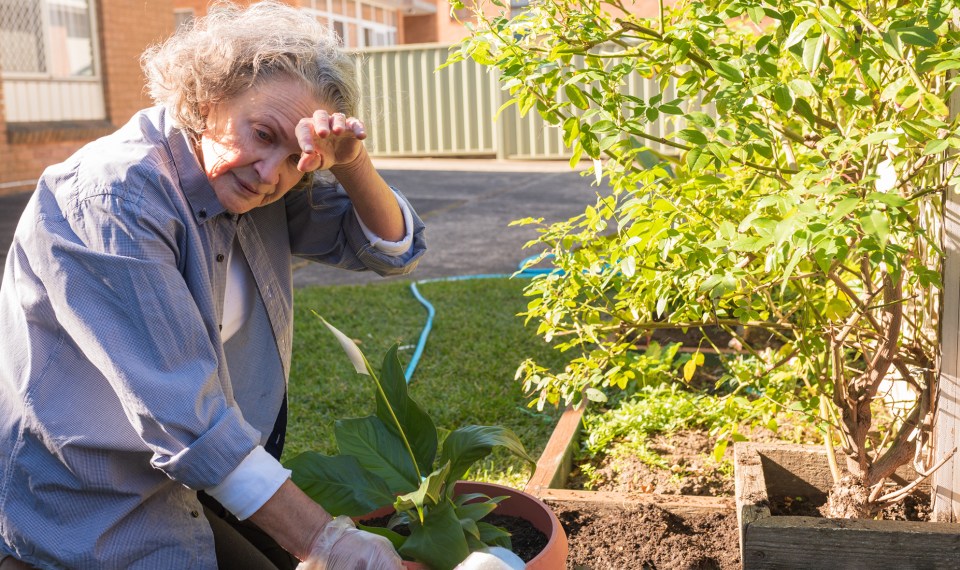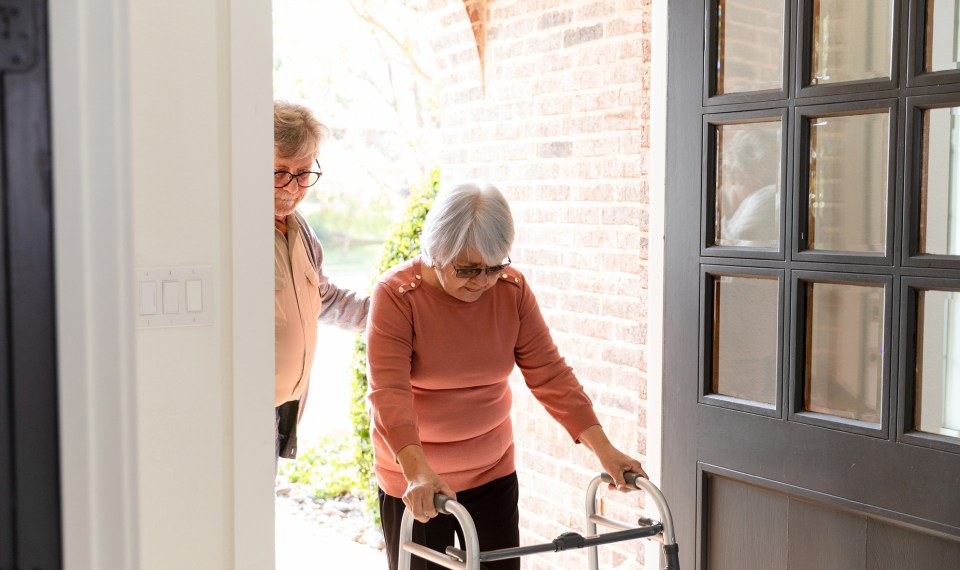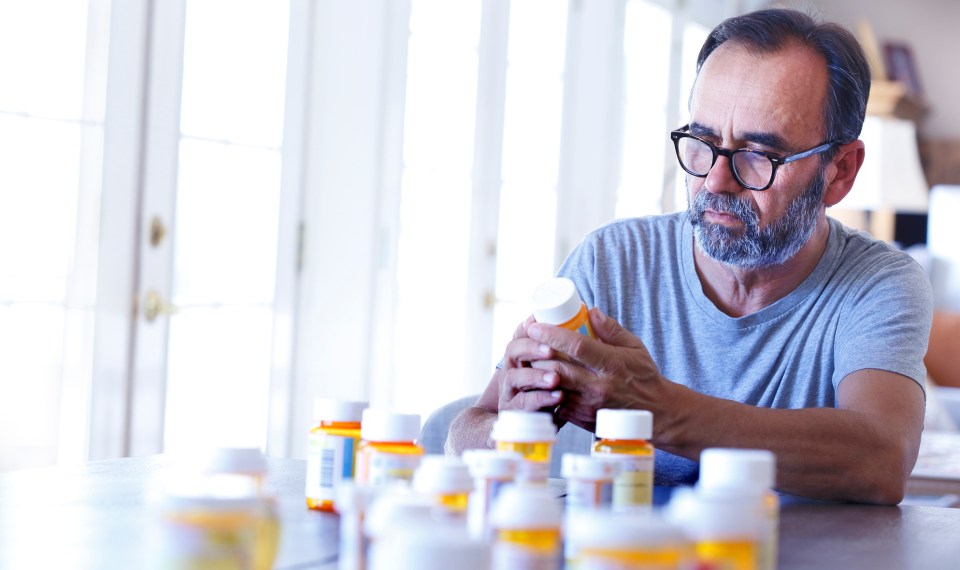With summer comes longer, sunnier days and more opportunities to enjoy the outdoors. But during the hottest months, you may need to take extra precautions to avoid heat-related illness, such as heat exhaustion and heat stroke. This is especially true for adults 65 and older.
The aging process affects your body’s ability to regulate its own temperature. Research also shows that older people’s bodies hold more heat, adding to the risk of overheating.
“The elderly are less able to adjust to temperature extremes,” said Dr. Thomas Morrione, medical director at New England Rehabilitation Hospital of Portland, a Joint Venture of Maine Medical Center and Encompass Health, and a member of the American Geriatric Society. “As folks age, there is a loss in temperature perception as well as reduced sweating in hyperthermia. Additionally, older folks are more likely to have chronic medical conditions and to take prescription medications that affect the body’s ability to regulate temperature and sweat.”
Risk factors include:
- Changes to the skin resulting in diminished blood circulation and inefficient sweat glands
- Chronic illness such as heart, kidney, lung disease and other conditions that cause weakness
- High blood pressure or conditions that require dietary changes
- Medications such as diuretics, sedatives, tranquilizers and certain heart and blood pressure drugs known to reduce sweating
- Obesity or being severely underweight
- Dehydration caused by insufficient fluid intake or rapid loss of fluid through heavy exertion
Types of Heat-Related Illnesses
There are a number of conditions associated with the body overheating. Taking extra precautions. Knowing the early warning signs can prevent illness or prevent illnesses from worsening.
Collectively referred to as hyperthermia, heat-related illnesses range from mild and harmless conditions to more dangerous illnesses like heat exhaustion and heat stroke.
Heat Exhaustion
Exposure to high temperatures, especially on humid days, and strenuous activity contribute to heat exhaustion.
Symptoms: Heavy sweating, dizziness, fatigue, rapid heart rate, cramps and cool, clammy skin, nausea and headache.
How to treat it: If you think you’re experiencing heat exhaustion, stop any physical activity, rest in a cooler place and drink plenty of water.
If left untreated, heat exhaustion can worsen to a heat stroke, a potentially life-threatening illness.
“Body is losing its ability to cool itself. Stop physical activities, move to a cool place and hydrate,” Morrione said. “This requires rapid attention. If ignored, it can progress quickly to heat stroke.This illness is a warning sign that your body isn’t able to regulate its temperature and cool down.”
Heat Stroke
This is a medical emergency and occurs when the body has lost the ability to cool itself. Your body temperature rises very quickly—above 104 degrees. The quick spike in body temperature combined with your body’s inability to properly sweat and cool itself results in this potentially life-threatening illness.
“If it progresses to heat stroke, sweating will stop, and your body temperature continues to increase. You’ll have a fever and could lose consciousness,” Morrione said.
Symptoms: Changes in behavior such as confusion, combativeness, staggering or delirium; reduced sweating even in hot conditions; rapid pulse; seizures; loss of consciousness; and dry or flushed skin.
How to treat: Heat stroke is dangerous and requires emergency medical care. According to the CDC, if you notice signs of heat stroke you should immediately call 911. Other measures to take while awaiting medical attention include:
- Move out of the heat. An air-conditioned space is ideal, but if you’re outside without access to an indoor space, move to a shady space.
- Submerge in cool water. If possible, a cool bath or shower can aid in lowering body temperature.
- Place a cold wet cloth or ice pack on the forehead, neck, armpits or groin areas. These areas are where blood passes closest to the skin. Cold compress can aid in lowering blood temperature.
- Increase air circulation using fans and remove outer layers of clothing.
- If the person suffering from heat stroke can safely swallow, take small sips of water or fruit or vegetable drinks.
Other Illnesses to Watch For
Heat-related illness considered to be less severe include:
Heat Cramps
While usually not life-threatening, heat cramps are an early sign of distress. Heat cramps are painful, involuntary muscle spasms caused by dehydration and the loss of electrolytes through sweat. Electrolytes are chemicals that hydrate, regulate nerve and muscle function and balance blood circulation.
Symptoms: Painful muscle cramps usually in the legs and abdomen, heavy sweating, thirst and fatigue
How to treat it: Gently massage the painful area, drink water or liquids containing electrolytes (sports drinks or clear juices) and rest from physical activity. Call your doctor if cramps worsen or last for more than an hour.
Heat Edema
After sitting or standing for long periods of time in the heat, your ankles and feet could become swollen. This condition is known as heat edema. The heat causes blood vessels to expand, pushing fluids in the limbs resulting in swelling. Older adults have an increased risk of this, especially if they are on medications that affect blood circulation.
Symptoms: Swelling most commonly occurs in the feet and ankles but can also include the arms.
How to Treat: Elevate feet and legs to reduce swelling.
Heat Syncope
If you’ve ever felt faint or dizzy when standing up from a sitting or lying position or when standing too long in the heat, it’s possible the culprit was heat syncope. When you stand up too fast or spend extensive time in the heat, blood flow to the brain is affected, and blood pressure drops causing a woozy or weak feeling. Dehydration caused by prolonged time in the heat contributes to this diminished blood flow. This is a particular risk for older adults on cardiac medications that affect the heart rate.
Symptoms: Dizziness, faintness, restlessness, tunnel vision, and light-headedness when shifting position (such standing up from a sitting position or getting out of bed).
How to treat: Typically, heat syncope is more common in younger people, but it’s still a sign of distress to watch out for in older adults. To treat, sit or lie in a cool place and slowly drink water, clear juice or an electrolyte-containing sports drink.
Heat Rash
Sometimes called prickly heat, heat rash occurs when sweat gets trapped under the skin. During hot and humid months, ducts become blocked more easily. You may notice red and itchy skin and a tingling or prickly sensation.
Symptoms: Itchiness, red bumps that resemble pimples, redness and mild inflammation.
How to treat it: Typically heat rash goes away on its own, but over-the-counter creams and topical treatments can ease the irritation. Calamine lotion, antihistamines and hydrocortisone cream can reduce inflammation and itchiness. Keep the area as dry as possible and speak with your healthcare provider for recommendations.
How to Prevent Heat-Related Illness
Prevention is key, Morrione notes. To prevent the onset of heat-related illnesses, he offers these suggestions, especially for older adults:
- Keep hydrated and keep cool. If you feel thirsty you are already behind the curve in a hot environment.
- If you are on a fluid restriction, check with your doctor on how much you should be drinking (at least think of your restricted number as a target to drink per day).
- If you are taking a medication that makes you urinate, such as diuretic, watch your weight closely. Often there are physician instructions to follow if you start losing too much water weight. Talk to your doctor to avoid an increased risk of dehydration in hot weather.
- Keep in a cool area if possible. If you have air conditioning, this is the time to use it. If your community has a cooling shelter take advantage of it. If not, head to your local indoor mall, usually well air-conditioned. Cool showers and baths are also helpful.
- Wear loose and lighter color clothing. “If you are like me, follicle challenged (bald), wear a good hat,” Morrione said.
- Lastly, check on your neighbor. Being inside does not eliminate the risks of heat-related illness, and people may be suffering behind closed doors.
The content of this site is for informational purposes only and should not be taken as professional medical advice. Always seek the advice of your physician or other qualified healthcare provider with any questions you may have regarding any medical conditions or treatments.



